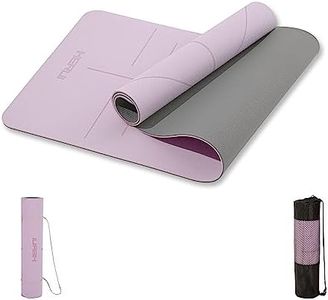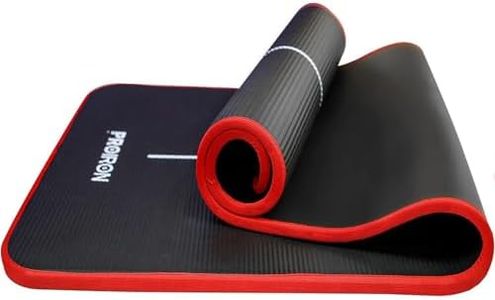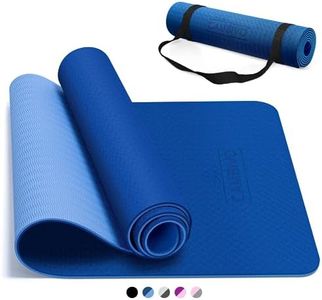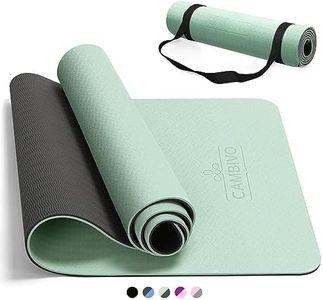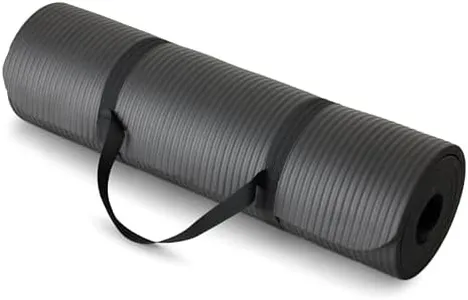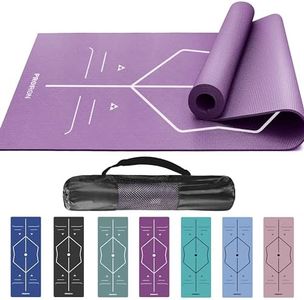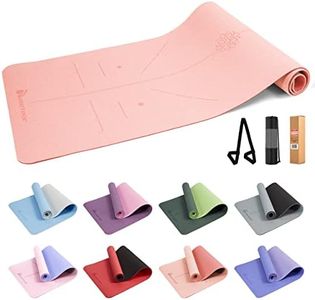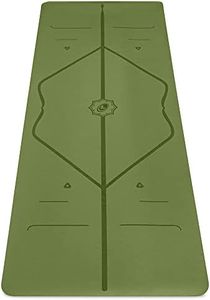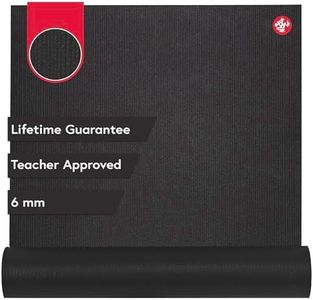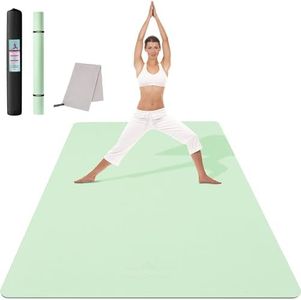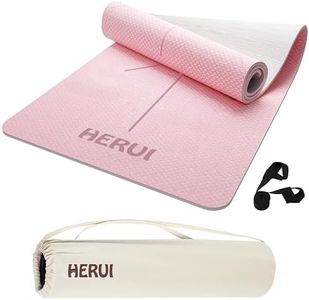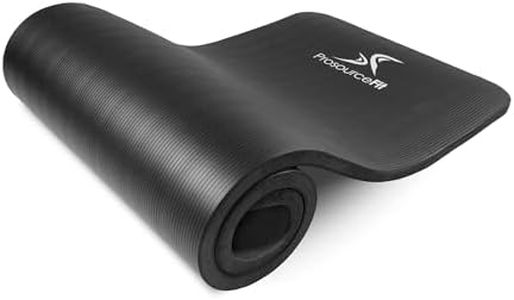We Use CookiesWe use cookies to enhance the security, performance,
functionality and for analytical and promotional activities. By continuing to browse this site you
are agreeing to our privacy policy
10 Best Affordable Yoga Mat
From leading brands and best sellers available on the web.Recommended lists
Buying Guide for the Best Affordable Yoga Mat
Choosing an affordable yoga mat requires some thought about how you’ll use it and what matters most to you. While the price is a factor, it’s important to find a balance between comfort, durability, and convenience. As you shop, consider how and where you’ll use your mat (like at home, in the studio, or outdoors), and think about your personal comfort needs, such as cushioning for joints or ease of transport. By focusing on key features, you can find a yoga mat that feels right for your practice and supports your wellbeing.ThicknessThickness refers to how cushioned the mat is, usually measured in millimeters. Thicker mats (around 6mm or more) provide extra padding, which is ideal if you need support for sensitive joints or plan to use the mat on hard surfaces. Medium thickness (about 4-5mm) offers a good balance between comfort and stability, making it a popular choice for most users. Thin mats (about 1-3mm) are lightweight and portable but provide less cushioning. Choose a mat thickness based on your comfort preferences, how much portability you need, and the type of yoga you practice—gentler styles may benefit from thicker mats, while balance-based practices might be easier on thinner mats.
MaterialYoga mats come in various materials such as PVC, TPE, rubber, or natural fibers. PVC is usually the most affordable, easy to clean, and durable but is less eco-friendly. TPE (thermoplastic elastomer) mats are more environmentally friendly, soft, and lightweight but may wear out faster. Rubber and natural fiber mats are sustainable and offer great grip, but can be heavier or have a distinct smell. Your choice of material should match your priorities: easy maintenance and durability, environmental considerations, or comfort and grip.
GripGrip refers to how well the surface of the mat prevents slipping during poses. A mat with good grip is important for stability, especially if you sweat or practice dynamic styles. Mats vary in texture—from very sticky to smooth—and also in how they perform when wet. If you practice hot yoga or tend to sweat a lot, prioritize mats described as 'non-slip' or 'sweat-resistant.' For gentle styles, moderate grip may be enough.
SizeYoga mats come in standard and extra-long or wide sizes. Standard mats are generally around 68 inches long and 24 inches wide, which works for most people. Taller individuals or those who want more space for stretches might prefer longer or wider mats. Consider your height and the amount of space you like during practice to pick a size that feels comfortable and supportive.
WeightThe weight of a yoga mat affects how easily you can carry it to class or when traveling. Lightweight mats are great for portability and frequent transport, while heavier mats are best for leaving in one place, like a home studio. If you know you’ll carry your mat often, look for lighter options; if stability is your goal and you won’t move the mat much, weight is less of a concern.
DurabilityDurability is how well the mat withstands regular use and cleaning. Some materials and thicknesses last longer before showing signs of wear, like peeling or flattening. If you plan to do yoga frequently, prioritize a mat known for strength and longevity. For occasional or gentle use, moderate durability might be sufficient.
